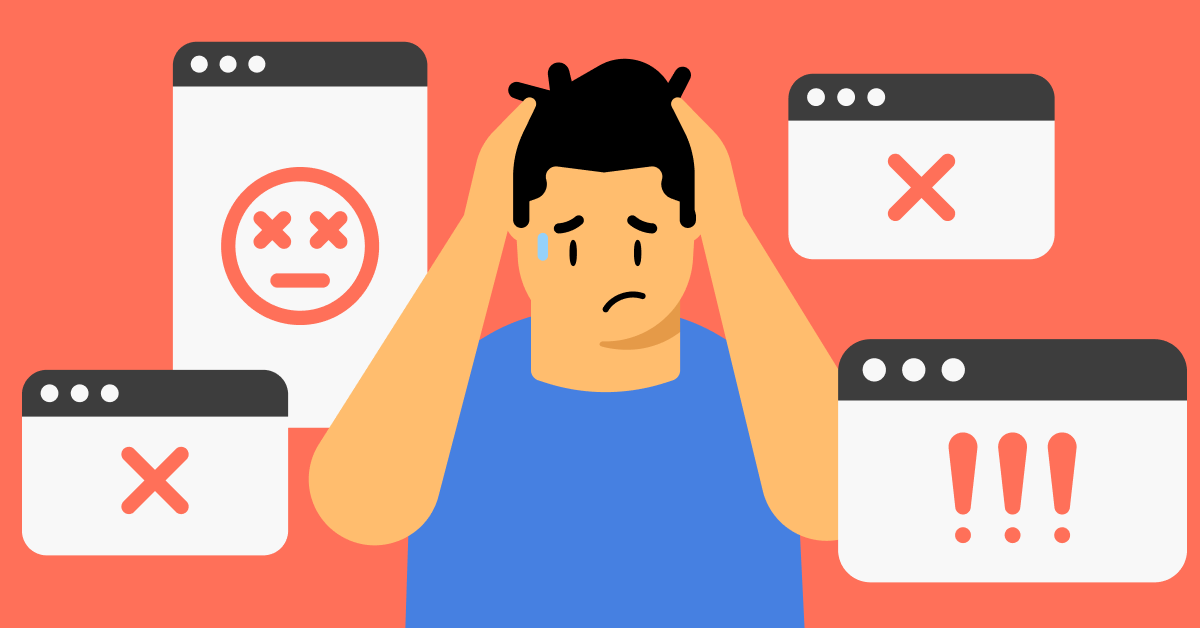What is a tracking pixel, and how does it work?
You’ve probably never seen a tracking pixel, but they’ve almost definitely appeared on your screen before. Tracking pixels allow companies to gather useful marketing information and assess the effectiveness of advertising campaigns. But what are they, exactly, and how do they work?
Table of Contents
Table of Contents
What is a tracking pixel?
A tracking pixel is a tiny, often invisible pixel that appears on a user’s screen. It serves a similar purpose as a browser cookie, although it has some distinct differences and advantages.
Tracking pixels usually take the form of small 1×1 squares (referred to as a 1×1 tracking pixel) and are designed to be transparent or at least to blend in with the background of the page they appear on. That’s because users aren’t meant to notice them.
A tracking pixel can provide its creator with useful information about certain internet users and helps online stores and advertisers assess the effectiveness of various marketing strategies.
How tracking pixels work
Tracking pixels are embedded in web pages and emails. When loaded, these pixels send requests to a server, recording user information, including the action users take on the page and even their IP address.
Pixel tracking is a simple system. Imagine that a company launches a new email campaign. They send out hundreds or even thousands of emails, but they need to know how effective those emails are — are people opening the emails, at least?
If they include an email tracking pixel, then when someone opens the email, their browser will automatically run the tracking pixel code. This will cause the browser to send a signal to the company’s servers. The signal confirms that the email was opened and can also communicate other details, including information about the operating system, IP address, and the location of the person who opened it.
Inserting a tracking pixel
The process of inserting a tracking pixel into digital content is known as embedding or integration. The tracking pixel is represented by a small piece of HTML or JavaScript code provided by the entity that wants to collect data. A 1×1 tracking pixel within a source code might look like this:
An HTML image tracking pixel:
<img src="https://example.com/tracking-pixel.png" alt="" width="1" height="1" />A JavaScript tracking pixel:
<script> // JavaScript Tracking Pixel Code (function() { var pixel = new Image(1, 1); pixel.src = "https://example.com/tracking-pixel.gif"; })(); </script>
The use of tracking pixels
Companies and websites use tracking pixels to gather data on user behavior, such as their shopping patterns, and optimize their content accordingly. User information helps businesses to work out what the most effective marketing strategies are, making it less likely that they’ll waste money on ineffective ads and email campaigns.
For example, Facebook provides tracking pixels that you can embed in your website to monitor the effectiveness of your ads on Facebook. This pixel tracks user visits and interactions on your website resulting from users clicking on your Facebook ad.
The regulations governing the use of online tracking tools, including tracking pixels, vary significantly from one country to another. For example, in the European Union, the use of tracking pixels is covered in the General Data Protection Regulation (GDPR). The GDPR requires organizations to obtain clear and informed consent from users before deploying tracking pixels that collect personal data. Information regarding user data collection on websites must be easy to understand, and the data collected through tracking pixels must be minimal. Organizations must also ensure that they gather, store, and maintain user data safely and securely.
Types of tracking pixels
There are two main types of tracking pixels — conversion pixels and retargeting pixels.
Conversion pixels
Conversion pixels are intended to track the effectiveness of different marketing campaigns and sales funnels.
They’re usually included in an order confirmation email or on a “thank you” page that appears after a customer makes a purchase.
The pixels can help companies assess the route by which the customer came to make the purchase. For example, it can show that they responded to a particular advertisement or came through an affiliate partner’s link.
Retargeting pixels
Retargeting pixels operate more like browser cookies. They can provide information to a website about where a user has previously been, which helps them target advertising more effectively.
If you’ve just been looking up flights for London and then notice that an entirely different website is now advertising London hotels, that could be the result of a retargeting pixel. In this function, they work in the same way as cookies.
Pros and cons of tracking pixels
Tracking pixels aren’t universally popular. But they are very useful for companies and websites. In some aspects they can also benefit users. Here are the arguments for and against their use.
Pros
- Advertising. Tracking pixels allow advertisers to measure the effectiveness of their campaigns. By gathering data on how users interact with the ads, advertisers can better target specific audiences by offering more relevant and personalized ads.
- Web analytics. Tracking pixels enable businesses to collect information about user behavior, which helps them to make informed decisions and improve their online and marketing strategies.
- SEO. Tracking pixels can be helpful in search engine optimization efforts by providing insight into user behavior and content performance, which in turn can be used to optimize content.
- Better online experience for users. Tracking pixels help websites provide more tailored advertising to their visitors. Arguably, many internet users would prefer to get useful ads responding to their needs rather than completely random ones.
Cons
- Spam. Pixels can also be used by less reputable online entities. You might have noticed that after opening a spam email, you received an increased number of similar annoying messages. That’s because spam emails and phishing messages often contain pixels that tell the emailer whether your address is active. If you open the email, the pixel signals this to the spammer, and they target you with more.
- Invasive ads. With the help of tracking pixels, advertisers gather user information, which they then use to target the users with specific ads. Some users might find targeted, personalized ads intrusive and annoying.
- Privacy risks. Cybercriminals might use tracking pixels to collect user data on their visits to web pages, interactions with content, and even their IP addresses. Data protection advocates warn users that their tracked data can become vulnerable to data breaches if companies and advertisers do not handle and store it properly.
How to protect yourself from tracking
From browser cookies to tracking pixels, these methods have their uses and aren’t always a negative. However, you should always have the power to choose whether you want them or not. Why is data privacy important? Because your data is valuable, to you, to companies, and to criminals.
One way to protect yourself from tracking on the internet is to pay attention to privacy settings on websites. It’s very easy to get into the habit of clicking “Accept all” when faced with a privacy preferences pop-up, but that’s actually a good place to start if you want to limit tracking. You may be able to switch off a website’s tracker functions, or at least limit them by removing tracking URLs.
It’s also worth using privacy tools, like a VPN or tracker blocking software. NordVPN’s Threat Protection Pro can block trackers as well as limit annoying ads and shield you from malware. With one NordVPN account, you can cover up to ten devices, raising your overall protection level.
Want to read more like this?
Get the latest news and tips from NordVPN.


